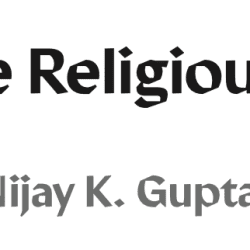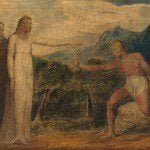Dr. Catherine J. Wright teaches at Bethel University and recently published Spiritual Practices of Jesus: Learning Simplicity, Humility, and Prayer with Luke’s Earliest Readers. Wright was kind enough to offer some key ideas from her research with us here on Crux Sola. Definitely read her book.
Following Jesus on the Path of Simplicity, Humility, and Prayer
Catherine J. Wright, author of Spiritual Practices of Jesus

Ideals for leadership among Luke’s Target Audience
Many of us have thought about the characteristics of the kind of leaders we would like to see in service in 2021. We want leaders who can promote public health, govern well, and legislate fairly. There also seems to be more discussion of late around other qualities: we would like to see integrity, humility, compassion, empathy, and a greater desire to alleviate economic suffering than to amass personal wealth. Luke’s target audience might have had similar desires. Suetonius’ caricature of the pompous, extravagant Caligula gives evidence of a desire for a different kind of leader-one that philosophers since Plato had longed for: the ideal philosopher-king. Such a leader would perhaps be like Xenophon’s legendary Cyrus or Plutarch’s Numa, known for their relationship with the gods, their habits of simplicity, their humility, and their unity of lifestyle and legislation. Luke’s authorial audience would have recognized such characteristics in his portrait of Jesus. The Lukan Jesus leads by example and models the habits of simplicity, humility and prayer that he instructs his followers to adopt. A glance at the reception of these same Lukan texts through the post-Nicene era reveals the persistent power of Luke’s portrait of Jesus for the life of faith.
The Power of Leading by Example
In Luke’s literary world, the leadership of a philosopher-king who was able to legislate through personal example was seen as superior to other forms of government. This kind of leader was thought to have such a close relationship with the gods that he could provide a living example of divine law. This sort of leadership was powerful; such a king could even “save” his people through their imitation of his virtues. Ideal teachers had this level of influence also. At a time when philosophy was more a way of life than a set of abstract ideas, people knew that time spent with a virtuous teacher had potential to be a powerful instrument for personal transformation. Even reading the lives of such teachers or philosopher-kings could effect this sort of growth in virtue. Plutarch confesses that he began writing his “Lives” for the sake of others, but finds that “I am continuing the work and delighting in it now for my own sake also, using history as a mirror, and endeavoring in a manner to fashion and adorn my life in conformity with the virtues therein depicted” (Tim. 1.1). Luke’s audience might have had similar expectations for their reading of his portrait of Jesus.
Reading Luke with the Church
Expectations for Luke’s portrait of Jesus to effect personal transformation persist into the earliest centuries of the church. While most of us in theory might reject the idea that applying proper rules of interpretation will result in a single correct meaning of a biblical text, many of us practically still go about our exegetical business as if this is the case, and with the requisite degree of distance from the object of our study. We can learn a lot from the reading experience of the mothers and fathers of the church. Jerome didn’t simply analyze the characteristics of the prodigal; he was the prodigal in need of repentance (Letter 2, To Theodosius and the Rest of the Anchorites, in NPNF2 6:4). For the early church, Luke’s portrait of Jesus as a model of simplicity, humility and prayer wasn’t just an interesting literary pattern; its study provided a genuine means for personal formation in those same virtues.
Following Jesus in the Path of Simplicity
We are living in a time that is characterized by a disparity between the few who live in lavish ostentation and the many facing gnawing anxiety about obtaining life’s necessities. Jesus invites those who are worried about putting food on the table into a lifestyle dependent upon God’s provision, and instructs the rest of us to take care of them. Such attitudes and behaviors are proof of our participation in the Kingdom of God. Jesus teaches simplicity through his own lifestyle, one quite similar to the pattern of life and teaching seen in the ideal leaders of Luke’s literary world. Reading Luke’s texts about the correct use of our resources with the early church highlights the rampant materialism of our own culture. We need the mothers and fathers of the church to teach us that we don’t really own our own wealth and remind us of our responsibility to engage in practical acts of love towards others. Last night I watched “It’s a Wonderful Life” as part of our annual Christmas tradition. In the movie, George Bailey, known for his kindness and generosity, who sacrifices his own ambitions and future potential wealth to provide affordable homes for his neighbors while he and his family live in a drafty, formerly abandoned home, is “the richest man in town.” That contrast between “real” wealth and actual money in the movie is seen in Luke, his literary culture, and Luke’s earliest receptions. The early church knew that those who are truly wealthy are not those who live in gilded mansions, but those whose faith, love and practical generosity characterize them as God’s children. It is noteworthy that George Bailey’s community rallies around him in the last scene to save him through their generosity. The example of George Bailey’s generosity has had its effect. The model of Jesus’ generosity has the potential to do the same for Luke’s readers.
Rediscovering Jesus’ Patterns of Humility
Luke presents humility as a defining characteristic of the Christian life. While not all writers in Luke’s literary world might have welcomed humiliation, self-knowledge was seen as critical to a well-ordered life, and models of proper modesty abound in ancient Mediterranean biographies. For the early church, humility was the key virtue upon which rested all other Christian virtues. While humility is still largely a forgotten virtue in our culture, today, we have had reminders of its importance. In Luke’s world and in ours, caricatures of self-flattering, pompous leaders provide fodder for comedians, but also bring tears. Lest we might be quick to forget our own prideful patterns as we focus on more obvious targets, Luke reminds us that we too can exhibit lapses in integrity, failures in self-knowledge, and fall victim to our desires for significance and position.
Learning Prayer with Luke’s Earliest Readers
We might think of ourselves as praying people, but we have much to learn from Luke, his literary culture, and the early church about prayer. We live in a culture accustomed to immediate gratification; we could be reminded of Plutarch’s Numa who spends so much time communing with the gods in solitude that legends arose about his relationships with them. We might need to listen to Cyril of Alexandria, who reminds us to ward off “weariness in prayer” and be as one who “rattles the door” of heaven in prayer (Homily 78 in Commentary on the Gospel of Saint Luke). We have much to learn from the early church’s absolute confidence in God’s ability to answer prayer and their deep trust in God’s character to act for our good.
Imitation as the Means for Transformation
Luke’s readers knew that the best way to bring about real change in people was to give them a model to copy. This is exactly what Luke provides for the church through Jesus’ patterns of simplicity, humility and prayer. With Luke’s ancient readers, we are invited to apprentice ourselves to Jesus, learning from the power of his example.













